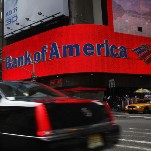How Oxygen Keeps Trying (And Failing) to Attract Young Women
LatestOh Oxygen. We need it to breathe, we need it to live and the executives over at the television network it’s named after are always trying to convince us that we need to watch it.
On Monday, Oxygen Media announced that they were rebranding themselves – again. This is hardly the first time they’ve attempted to gain more of their targeted demographic (18 to 34 – and sometimes to 49-year-old – women) because they don’t have enough viewers in that age range.
To be quite clear: networks do this all the time. But with Oxygen, each rebrand has always felt a little more obvious, a little less effective. Because the channel has never quite caught on the way its leadership has wanted it to (or because it’s taken such a long time for it to), each rebrand is actually an attempt to capture exactly the same market they were trying to go after before. (Young) Women! They have thoughts and emotions and feelings and they love television!
1998-2000: With the help of Oprah Winfrey, Oxygen Media announces they will launch under the tagline “Pure Oxygen”
Now that Oprah has her OWN network, many have forgotten that there was a time when she um, had her own network. When Oxygen Media was founded as an “Internet company that would produce television programming” in 1998 by CEO Geraldine Laybourne, with Marcy Carsey, Tom Werner, Caryn Mandabach, Oprah came on as a heavily-touted figurehead/founder for the “24-hour cable channel”/”network of 19 popular Web sites.” As Laybourne explained about the company’s origins to the Poughkeepsie Journal in 2000:
I had been planning on creating an Internet company that would produce television programming and so we went out and talked to AT&T, got their commitment to give us carriage and then went to Oprah Winfrey and said this is what we want to do – we want to create a brand that really is in service of women, that deals with women’s advocacy issues, that is an advocate for women, that does stand up for women, that provides the opportunity for diverse voices of women to be out there, that embraces all kinds of body types, every kind of ethnicity and talent – and do you want to join us. She had long been thinking about wanting to have her own television network but saw the advantage of joining forces with us. … She’s an owner, she’s a participant in the creation of the vision for Oxygen and she’s involved in the programming.
For Laybourne, the way women would feel about Oxygen in the future would be the way children felt at that point about Nickelodeon: “that Oxygen really understands them, Oxygen is on their side, Oxygen has helped them fulfill their many functions.”
2002: Oxygen begins and tries not to “gasp for air”
”Please don’t say Oxygen is gasping for air,” Laybourne laughed to the New York Times two years later, a reference to the many media jokes that had been made about the company’s name and struggles. ”We are bursting with energy.”
At this point, trying desperately to find viewers, Laybourne’s company began to slowly backtrack on their original intention to provide women with content that was more serious than what you’d find on WE or Lifetime:
“When we started, we thought women really needed our help,” Ms. Laybourne said. ”Focus groups showed us that women are not that pathetic. They want to be entertained.” She said that wit was now the DNA of the network’s brand, and that she thought it could help distinguish Oxygen from the more breathless tone of Lifetime.
Oxygen had a slow start as it struggled with the critical reception of its web content and getting onto a channel that reached enough homes. But eventually, they reached some success and as the Wall Street Journal noted in 2001, were able to get enough people watching to at least attempt to “deliver intelligent TV programs — in contrast to what executives dismissed as the ‘women-in-distress’ shows on its dominant rival, Lifetime” they’d promised. But after starting with reruns and shows you won’t remember like Pajama Party and Trackers failed, they launched other programs you likely won’t remember, like Exhale With Candice Bergen, The Isaac Mizrahi Show, Bliss, Girls Behaving Badly and Oprah After the Show, which was the precursor to shows that are popular on OWN now.
Two years later, Alessandra Stanley would credit Oxygen as a major developer of content that made it “safe to be a stupid slut on television.”
-

-

-

-

-

-

-

-

-

-

-

-

-

-

-

-

-

-

-

-

-

-

-

-

-

-

-

-

-

-

-

-

-

-

-

-

-

-

-

-








































